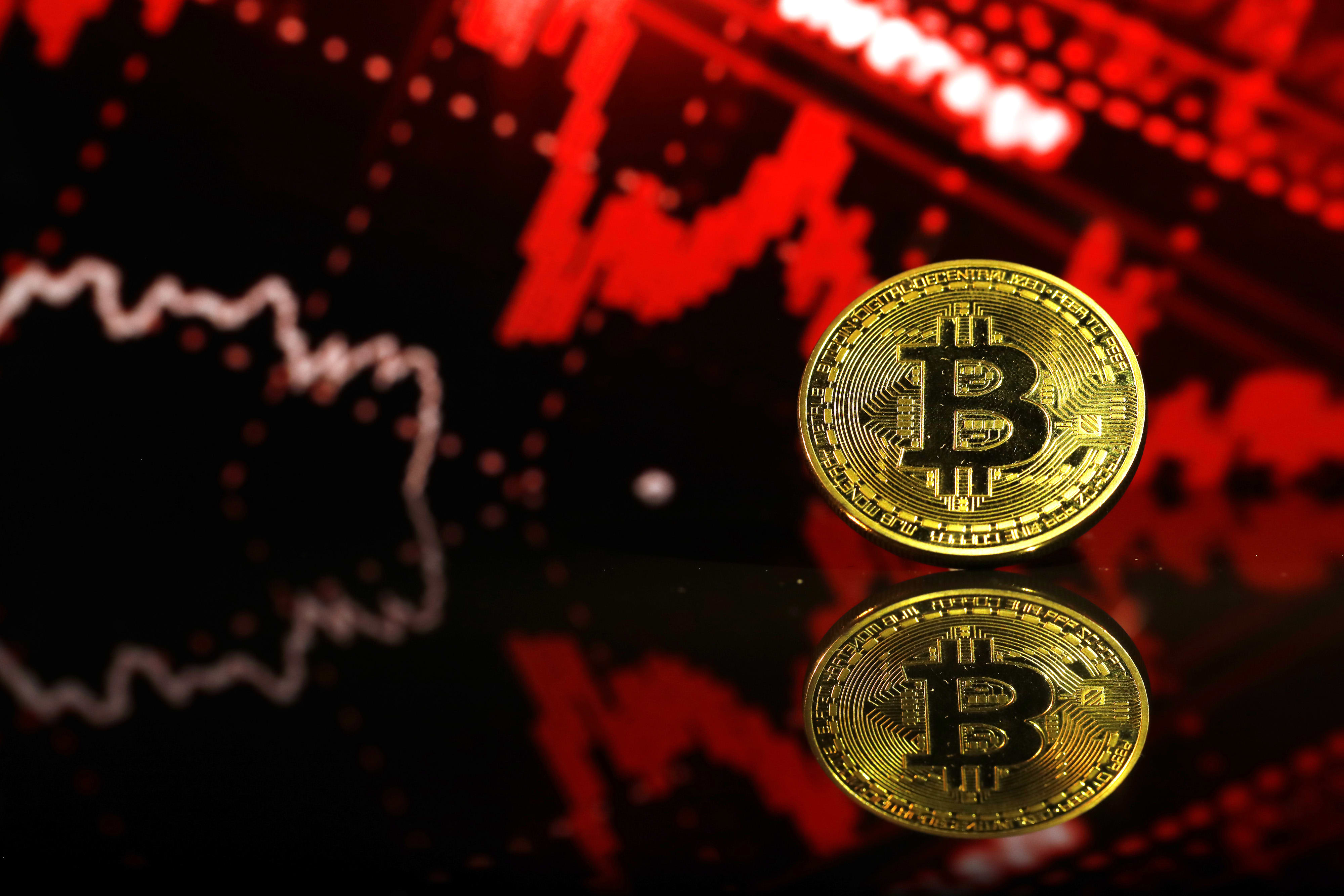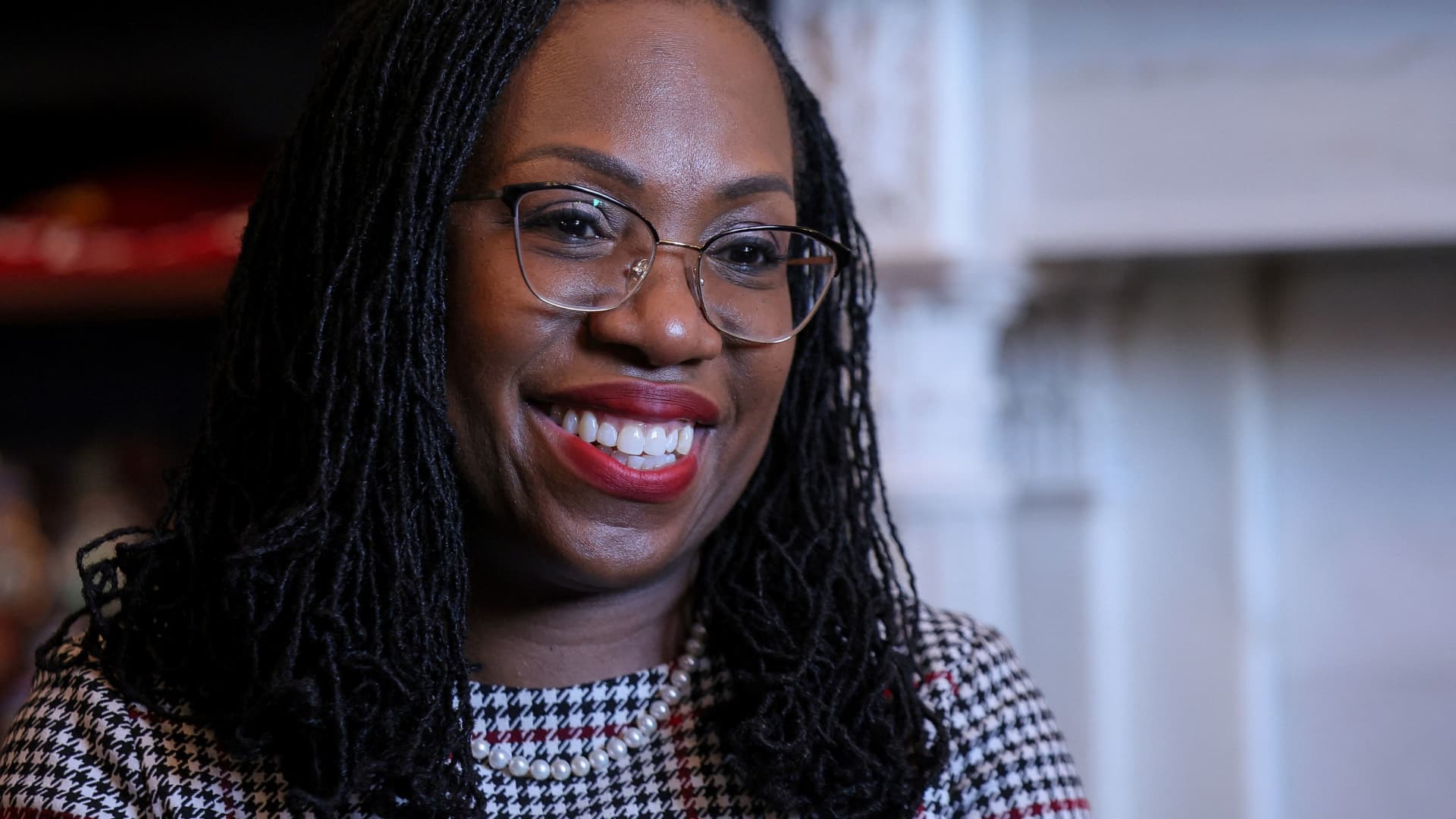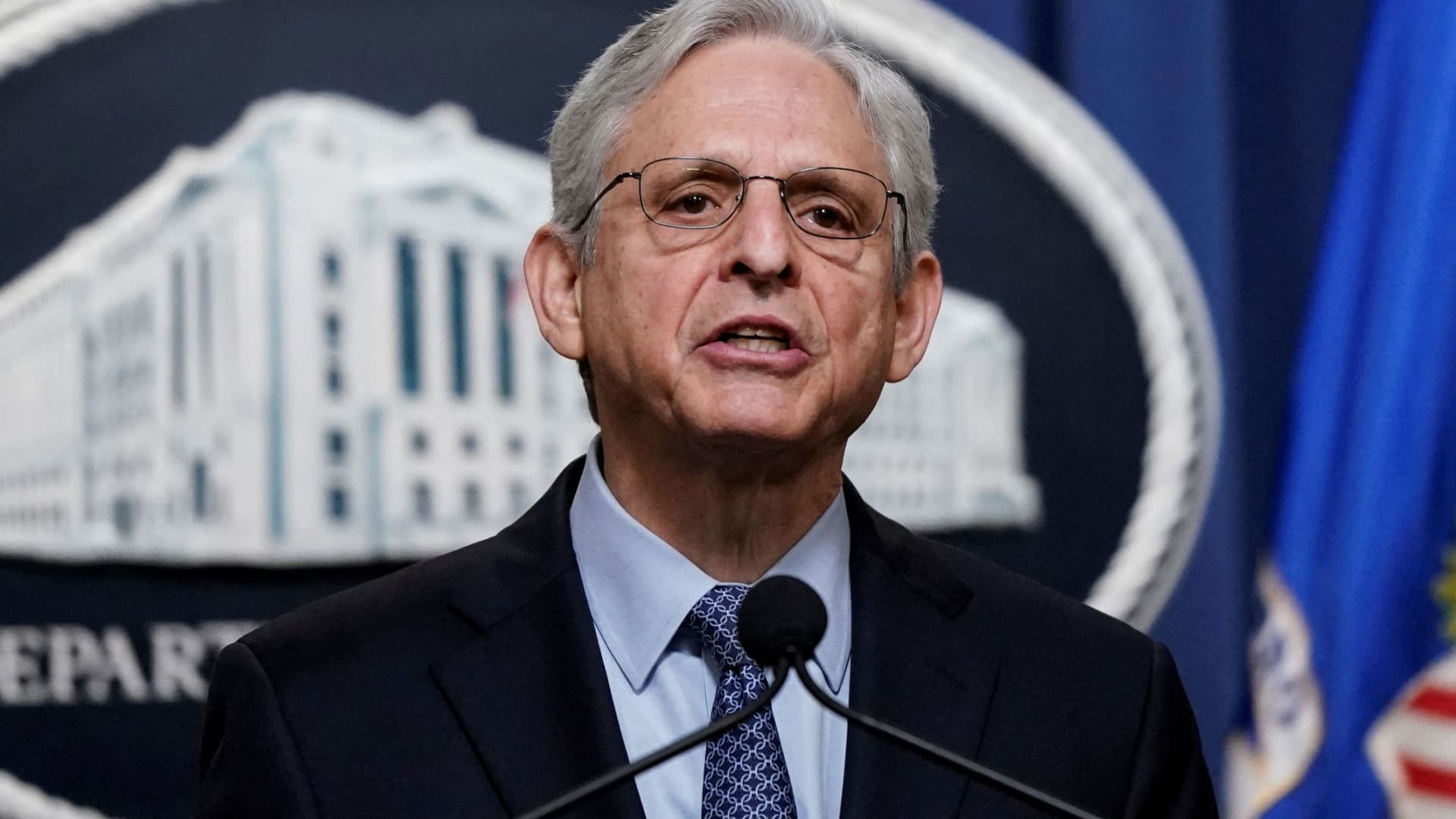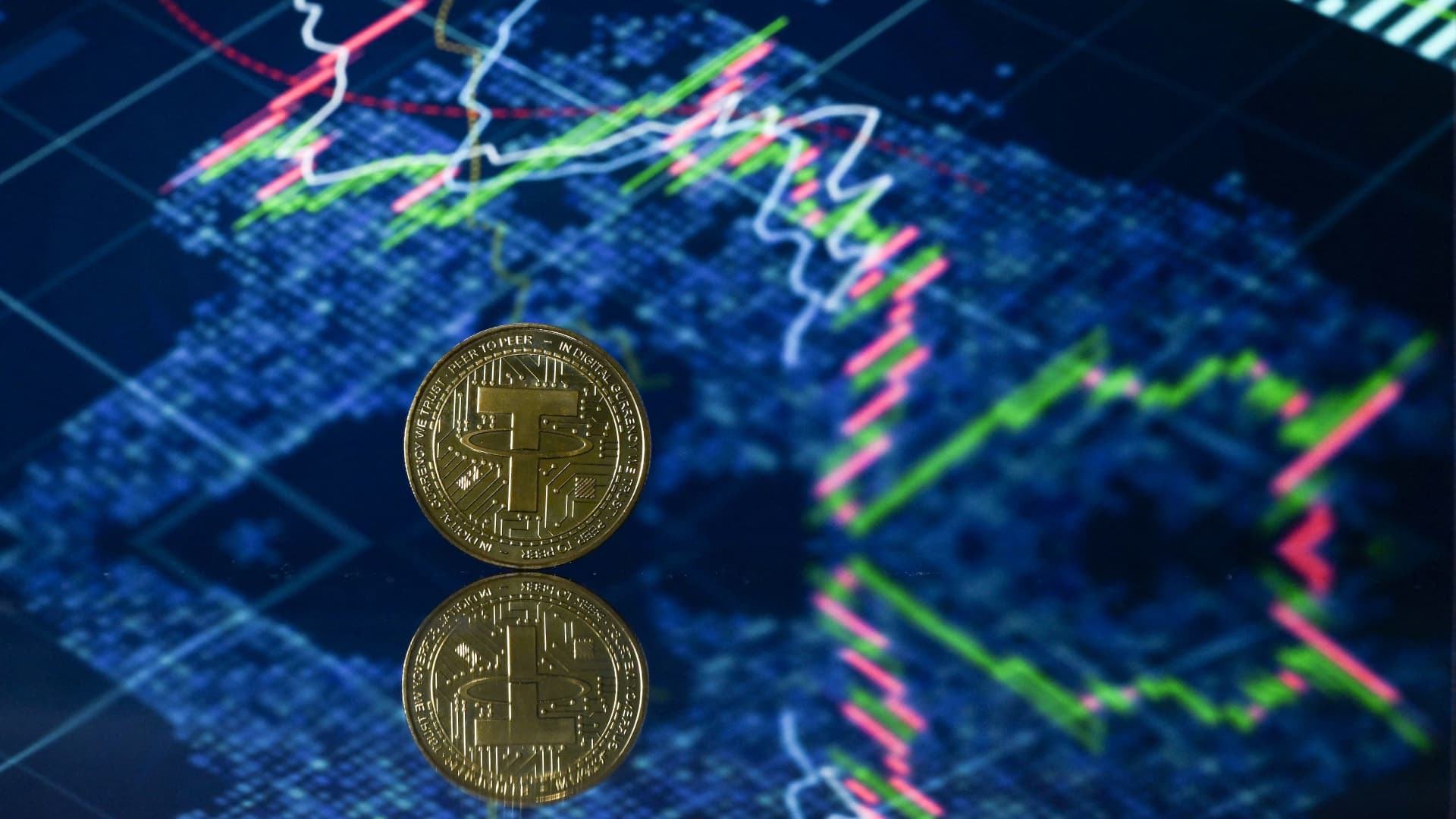India's Modi is on a landmark visit to the U.S. Here's what to expect
Indian Prime Minister Narendra Modi is set to meet U.S. president Joe Biden on Thursday, and analysts say talks on defense and technology are on the agenda.
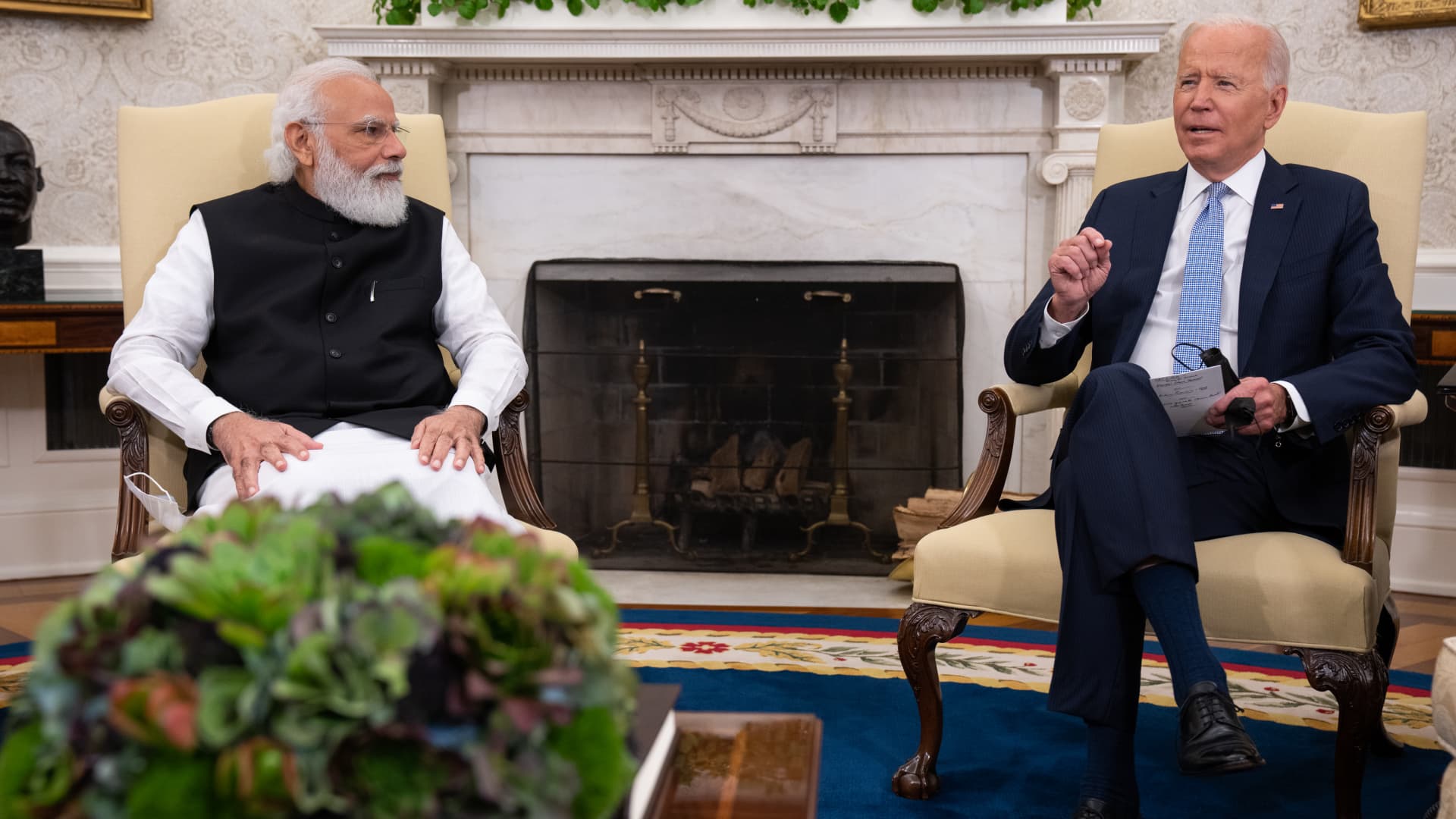
U.S. President Joe Biden and Indian Prime Minister Narendra Modi participate in a bilateral meeting in the Oval Office of the White House on September 24, 2021 in Washington, DC.
Pool | Getty Images News | Getty Images
Indian Prime Minister Narendra Modi will meet President Joe Biden on Thursday during his first state visit to the U.S.
High on the agenda will be deepening of defense ties, partnerships in technology and India's role in the Indo-Pacific.
Ties between India and the U.S. are at a turning point and the relationship between the two nations have improved in the last decade, said Harsh V. Pant, vice president of studies and foreign policy at Observer Research Foundation, a Delhi-based think tank.
"This is a very important visit, it is as much about India reaching out to the U.S., as it is about the U.S. reaching out to India," Pant said.
Biden has only hosted two state visits during his presidency, the first with his French counterpart Emmanuel Macron in December 2022, and the second with South Korea's president Yoon Suk Yeol in April.
"This visit symbolizes the unwavering commitment to deepening ties and signifies the immense potential for both countries to collaborate amidst global challenges," Farwa Aamer the director of South Asia initiatives at the Asia Society Policy Institute, said.
"For many in India and the U.S., the visit is a testament to the promise and high expectations for the future of U.S.-India collaboration — one of shared prosperity," Aamer said.
The U.S. is looking at India as a partner it can rely on, but its partnership will be very different since India is not an ally, Pant told CNBC.
"The U.S. is not used to having partners that are not allies, but is willing to look at its partnership with India differently — one that is relatively independent minded but will help American priorities as well," he said in a phone interview.
Strengthening defense ties
India and Russia have long shared a steadfast relationship, with India relying heavily on the Kremlin for oil and military weapons.
The South Asian nation is the world's largest buyer of Russian arms, accounting for approximately 20% of Russia's current order, Reuters reported.
"India has been too dependent on one country and that is not good, and although dependence has dropped from 80% in the 1990s to about 65% now, dependence is still huge," Pant pointed out.
However, because of the war in Ukraine, Russia has not been able to send critical defense weapons it had promised India, pushing the Indian military to look to others — such as the U.S. — for supplies.
Russian President Vladimir Putin with Indian Prime Minister Narendra Modi on the sidelines of the Shanghai Cooperation Organization leaders' summit in Samarkand on Sept. 16, 2022.
Alexandr Demyanchuk | Afp | Getty Images
Still, analysts are optimistic that the meeting between Biden and Modi could lead to more weapons agreements.
India has long been interested in buying SeaGuardian drones from the U.S., but the hoped-for deal that could be worth between $2 billion to $3 billion has been long hampered by "bureaucratic stumbling blocks," Reuters reported.
The deal could still be brought back to the table.
"India's Ministry of Defense has reportedly approved the purchase so it seems likely. The U.S. would like this to go through," Manjari Miller, senior fellow for India, Pakistan and South Asia at the Council on Foreign Relations told CNBC.
"It would be important for the partnership — only a few military allies and NATO countries have this drone, and the U.S. is particular about whom it sells U.S. weapons and technology to."
She highlighted that now is an important time for the deal to come through as it will draw "India closer into the U.S. defense orbit, and is a step away from India's dependence on Russian arms and equipment."
India is undermining its strategic options by thinking it can continue to rely on Russia, Lisa Curtis, senior fellow and director of the Indo-Pacific Security Program at the Center for a New American Security.
"It wants to try to keep a wedge between Russia and China because it doesn't want to contemplate the idea of Russia and China both arrayed against it. Then you throw Pakistan in there and things look really dire from the Indian perspective," Curtis told the Carnegie Endowment for International Peace.
The drones will also enhance the Indian armed forces "intelligence-surveillance-reconnaissance capabilities" that will aid the country in securing their borders with China and Pakistan, Karthik Nachiappan, research fellow at the Institute of South Asian Studies at the National University of Singapore said.
Tensions between India and China over the disputed border in the Himalayan region has been ongoing since the 1950s with no end in sight. Twenty Indian soldiers were killed in June 2020 in hand-to-hand combat with Chinese troops, followed by another clash in December 2022.
But India wants to "go beyond a buyer-seller relationship," with the U.S., Pant said adding that India is working toward a "co-production and co-development relationship" with the U.S. so it can build its own domestic manufacturing defense base.
Private sectors in the U.S. could also start making more significant investments in India, with the two countries set to work together on producing fighter jet engines, said Pant.
"There's a change in the way the U.S. looks at India, and defense will be a beneficiary of that. India will definitely be looking to reduce its dependence on Russia, and that will be quite an extreme move," he added.
Without mentioning China, the White House said in May the visit will "strengthen our two countries' shared commitment to a free, open, prosperous, and secure Indo-Pacific and our shared resolve to elevate our strategic technology partnership, including in defense, clean energy, and space."
"Both the United States and India share the objective of not having an Asia that is dominated by China, or an Indo-Pacific region that is subject to Chinese coercion and assertiveness," said Ashley Tellis, senior fellow at the Carnegie Endowment in a Q&A report.
Energy: Reliance on Russian oil
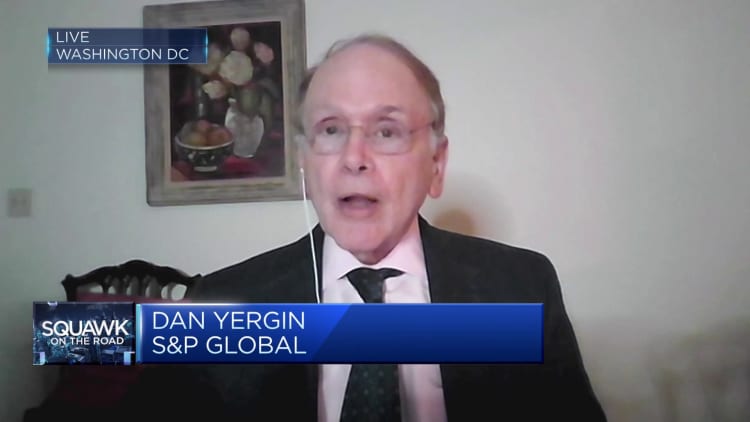
"India has become very close to the West in the last five to 10 years, but it understands that it cannot simply detach from Russia," Amit Ranjan, research fellow at the NUS Institute of South Asian Studies said.
"Russia is an old friend of India, and India understands the importance of the relationship … Oil is an important piece of that relationship," Ranjan said.
Technology: Diversifying from China
Partnerships in technology will be also be top on the agenda for Modi.
"I think the technology issues have become so critically important, as we see China making advancements and hear about China's advancements with AI," according to Curtis.
"In seeing how much China is advancing, the U.S. now understands the importance of really cooperating closely with India and trying to take advantage of the strengths on both sides," she said.
"There are so many ways that the two sides can benefit from this increased technology cooperation—not to mention the progress that has been made on semiconductors. This has been a real area of focus for India and the United States, and I see that only growing as we move into the future," Curtis added.
There will also be a flurry of business meetings with tech leaders.
Tesla chief Elon Musk met Modi in New York to discuss the EV company's ambitions in India and the possibility of setting up a manufacturing facilities in the country.
Modi is also expected to meet other CEOs, including Apple's Tim Cook, Google's Sundar Pichai, Microsoft's Satya Nadella and FedEx's Raj Subramaniam at the White House state dinner on Thursday, sources told CNBC.
The growing partnership between India and the U.S. also gives room for the two nations to adopt a "China plus one" strategy and push more technology companies to set up operations in India, analysts told CNBC.
The U.S.-India initiative on Critical and Emerging Technology was announced in May last year. The iCET initiative aims to "elevate and expand" the two countries' technology partnership and defense industrial cooperation, the White House said in January.
Pant said it points to the two countries' willingness to work together — both in terms of research and development, and what both governments can do together.
In the last six months, more U.S. technology companies have set their eyes on India.
People are seen inside the Apple store after the launch at Jio World Drive mall in Mumbai, India, on April 18, 2023.
Ashish Vaishnav | SOPA Images | Lightrocket | Getty Images
Apple opened two physical retail stores in Delhi and Mumbai in April, and has plans to expand further in India. Taiwan-based Foxconn — one of Apple's largest suppliers — broke ground on a new $500 million factory in Telangana.
While Amazon Web Services, the company's cloud computing unit, announced in May that it would invest $13 billion in India by the end of this decade, Reuters reported.
"India and the U.S. are framing a relationship that can respond to 21st century challenges, and China will be watching very carefully," Pant said. "The two countries have already identified what their strengths are and are articulating a much ambitious agenda for that."
— CNBC's Seema Mody contributed to this report.

 Astrong
Astrong 








